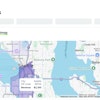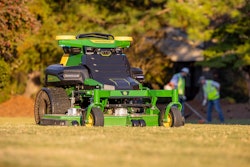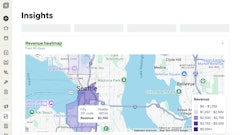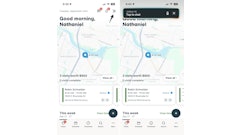
When it comes to managing a landscaping fleet, embracing new technologies and solutions can help the business stay competitive by saving money through optimization of processes and workflows. Which is not to say implementing new technologies always goes smoothly; one of the leading factors in the success or failure of technology implementation is fleet-wide adoption. Although fleet technologies like optimization platforms, maintenance software, telematics and so on can provide a multitude of benefits business wide, some fleets may encounter adoption roadblocks.
How to find the perfect fit
If you don’t have goals outlined, it’s going to be hard to choose a technology that meets your fleet’s needs. Are you trying to improve inspection rates or reduce routing and driver frictions? Do you want to maximize cost control or are you looking to improve maintenance and inspection compliance? Basically, if you don’t know what you need the technology to do, you’re less likely to choose the best one for your fleet, which can make adoption all the more difficult. What is the goal of implementing these kinds of technologies? What problems will they solve? For additional insight, ask co-workers and industry peers about their experience with technology similar to what you’re looking to add to your fleet. What challenges did they face during the research or implementation processes and what would they change if they could?
After determining the fleet’s goals and outlining the issues you want a specific technology to address, a core challenge still remains: cost. Choosing a solution solely based on cost can result in implementing a product that lacks essential features, such as tracking key metrics, meeting reporting needs, having a user-friendly interface and offering mobile access. In the end, justifying the cost involves demonstrating the value that the solution or technology provides.
Talk to the team
The successful integration of new fleet technologies depends largely on driver/operator and technician adoption. Before considering new technologies, fleet managers should talk with employees to understand their concerns. What challenges are they experiencing that disrupt productivity or cause frustrations? Knowing the obstacles your team faces allows you to ensure you’re investing in a technology that can help improve the team’s workflow rather than compound issues.
There are also implementation concerns to consider when it comes to the technology itself, including employees’ discomfort with monitoring or a lack of digital skills. Fleets can address monitoring concerns by communicating the technology's purpose, emphasizing its benefits to both employees and the business; focus on transparency and improved day-to-day operations, especially around productivity, and how the technology is meant to make it easier for the team to hit the ground running every day. Another way to alleviate monitoring concerns is by including the team in the early stages of selecting a fleet technology, demonstrating that you value both their concerns and feedback.
An added benefit of addressing monitoring concerns and involving the team in the technology selection process is that it empowers them to take ownership of the technology and ensures that the chosen solution aligns with their needs, capabilities and, to some degree, their personal comfort. This helps build confidence for employees who lack digital skills. Of course, offering comprehensive training during onboarding and ongoing support after doesn’t hurt either. Look for a user-friendly platform that provides easily accessible resources (videos, articles, around-the-clock customer service and so on) to simplify the learning curve and give your team the confidence to troubleshoot issues as they arise.
Try conducting trials or demos before a technology purchase to see how usable it is. Doing this with a group of drivers/operators and technicians allows the end users to experience the technology hands on. After all, if the end users aren’t going to use it, it’s not likely to be implemented well, which means money down the drain. So, demo, trial and then gather feedback promptly. What was the usage rate over the course of a trial? Did certain employees or departments have higher usage rates? What were the pros and cons of the technology? Is there a general consensus among users that this technology will benefit the fleet?
On the topic of trials, use your time effectively. During a trial, it's important to focus on features that provide the most value to the fleet. Using the goals you laid out, trial the features that make the most sense for your operation. Including service reminders and inspections, trialing high-impact features can help you understand the product's usability and its potential to meet specific goals. Exploring additional features like work orders, parts inventory, fuel entries and integrations adds depth to the trial experience. In addition to communicating with your team during the trial, communicate with providers; ask questions and seek assistance for a more comprehensive understanding of the product.
How to set expectations
Once you’ve implemented a new fleet technology, it’s important to set expectations. Have a designated timeline in place for how you want to roll out the technology and when you expect proficient use of it across the fleet. This could consist of starting with one crew and adding more from there or going department by department, or it could be rolling out the technology all at once and focusing on using a limited amount of features before adding more as proficiency grows.
Expectations also need to be set for stakeholders expecting to see a quick ROI on the chosen technology. Share your roll-out strategy and outline how and when you expect to see returns. Choose high-cost center metrics to benchmark, such as maintenance and repair costs and/or fuel consumption, and measure the changes over time. If you’ve chosen the right technology for your fleet and successfully implemented it, you should see a reduction in operational costs.
Whether you’re using a fleet technology that helps you maintain your equipment, track your vehicles or manage maintenance and repairs or all of the above, proper implementation is key to seeing the benefits of its use, and that requires proper adoption.




















